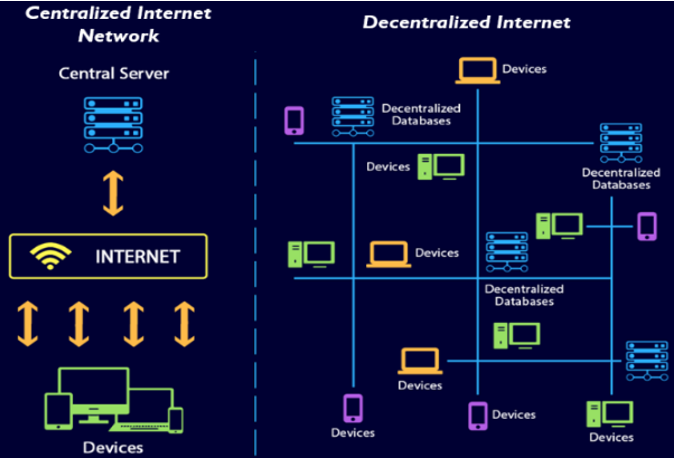Fur Babies, Real Money: Why Investors Should Follow the Leash
Fur Babies, Real Money: Why Investors Should Follow the Leash


Loneliness, Third Spaces, and Why Pets Are Quietly Taking Over the Economy
Last weekend at a pet shop, we stumbled upon a towering display of prams—not for babies, but for dogs. Yes, dogs. Each stroller more stylish and padded than the next.

And it made us wonder: the next time you see someone pushing a stroller down the street, will you coo at a baby—or be met with the panting snout of a Pomeranian named Mochi?
Not a shocker, really. In a world where third spaces are increasingly rare and the cost of raising a child has skyrocketed, many are turning to pets for connection, purpose, and companionship.
Welcome to the Micro-Connection Era. And no, we’re not surprised.
The Loneliest Generation? We’ve Seen This Coming
We’ve never been more connected. And never felt more alone.
According to a 2023 Harris Poll, nearly 80% of Americans would choose a completely in-person social life over a digital-only one. Globally, governments are responding with white papers, ministers of loneliness, and social strategies. Investors might want to respond too.
Because loneliness? That’s a market signal.
Sociologist Ray Oldenburg once coined the term “third places”—places outside of home and work where people gather. Coffee shops, gyms, parks, padel courts.
Now, we’re seeing the evolution: “fourth places.” Book clubs. Pottery meetups. Padel groups. According to Eventbrite’s 2023 survey, 73% of 18–35 year olds plan to attend in-person events soon. Even better? 85% of those who already did said they made a close friend.
It’s clear. Gen Z and Millennials don’t just want community. They’re building it. But when they can’t find it?
They adopt it. Fur, paws, and all.
Previously on Heyokha…
Remember our deep dive into the Microjoy Economy—where small, emotionally potent purchases like Labubu toys reflected a shift from macro-consumption to micro-splurges? Consider this the sequel. And yes, we still believe in the power of joy per Rupiah.
Pets: The New Social Infrastructure
When you can’t find a third space, a third species will do.
According to a 2023 OnePoll survey for Synchrony:
- 41% of Gen Z would rather spend $100 on their pet than their partner.
- 36% of Gen Z say they get more joy from seeing their pet happy than their partner.
- 42% would skip vacations to save for surprise pet costs.
- 45% would give up eating out for a year in exchange for free pet care.
- Nearly half of millennials would sleep outside in the snow if it meant their pet could live one more year.
We are not joking. But we are impressed.
And let’s talk money. Synchrony estimates that the total cost of raising a dog over a lifetime can range between $20,000 and $55,000. For cats, it’s $15,000–$46,000. In an era where human babies feel financially impossible, pets are stepping into the emotional—and budgetary—void.
Babies? Maybe Not. But Definitely a Beagle.
According to Pew Research, 47% of young U.S. adults now say they’re unlikely to have children. Why? Top reasons include:
- It’s too expensive.
- The world feels unstable.
- Honestly, they just don’t want to.
So what do they want instead?
- Something cuddly.
- Something emotionally validating.
- Something you can name after your favorite drinks or dessert without much judgement.
Hence: the fur baby boom.
In fact, Gen Z spends an average of $178/month on their pets, according to Lemonade the insurance company (2024). That’s nearly $90/month more than Boomers. Over a pet’s lifetime, that translates into luxury-brand-level spending.
And all this love for pets? It’s also changing the labor market. According to Indeed’s 2025 Best Jobs list, veterinarian is now the #1 job in America. Job postings for vets rose 124% between 2021 and 2024.
Even our career aspirations are going to the dogs. Literally.
Indonesia Is Right On Cue
In Indonesia, malls have gone from “no pets allowed” to rolling out red carpets for fur babies. Major shopping centers now provide pet-access zones, dedicated parks, hydration corners, and yes—boutique grooming services inside the mall.
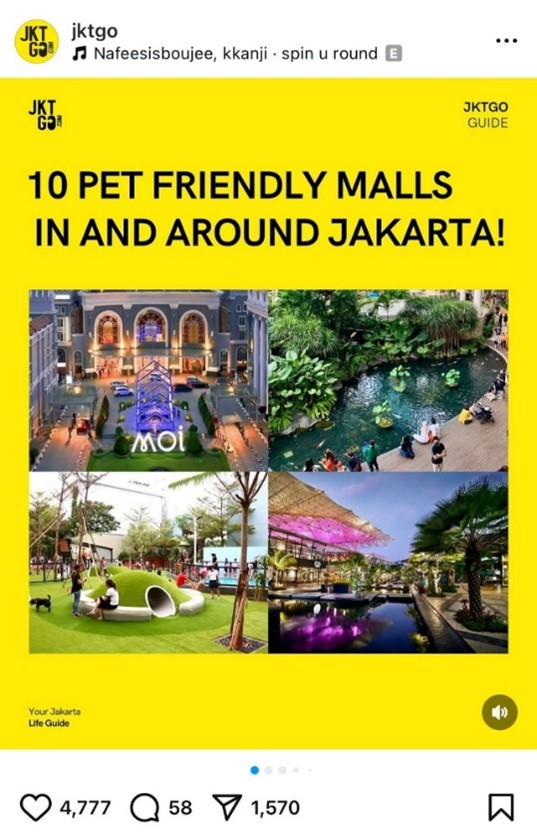
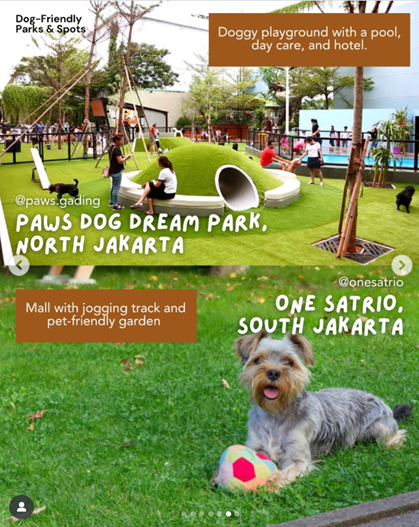
And if you’re still wondering whether pets have made it into the mainstream, just ask Bobby.
Yes, President Prabowo’s cat Bobby is arguably the most influential feline in the country. With over 1 million Instagram followers, Bobby doesn’t just sit pretty—he rolls up to events in a customized Rp6.5 million stroller (equivalent to $400 USD), flanked by a full security detail. And when Bobby made a public appearance, even Bill Gates showed up to meet him.
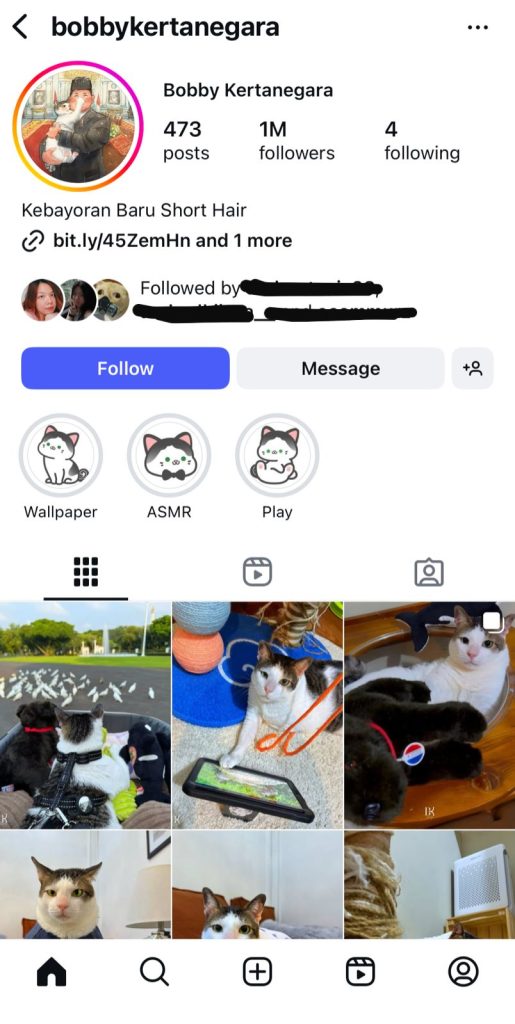

1 million fans for the feline. We weren’t kidding about Bill Gates. He even gifted Bobby a whale plush toy.
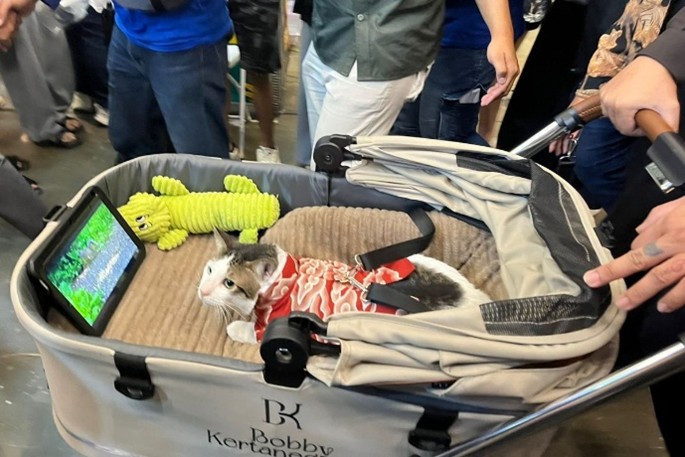
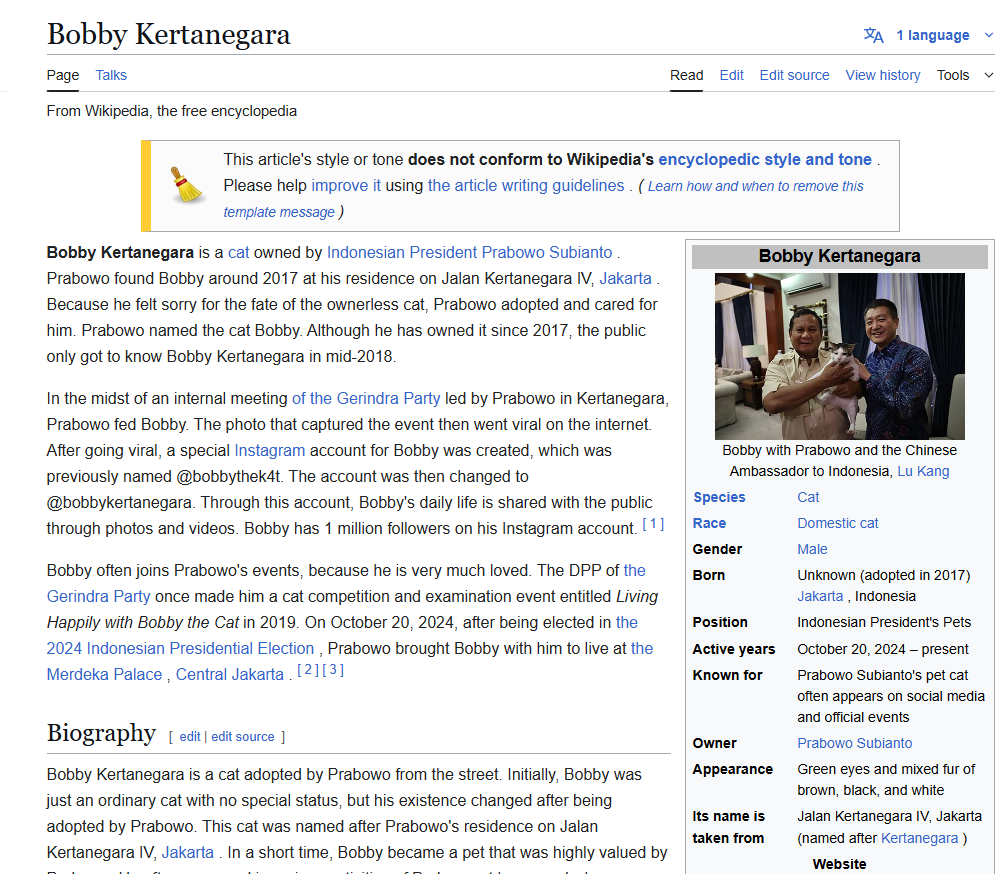
Bobby rolling into Jakarta’s Pet Fest as an honorary guest, decked out in his custom stroller equipped with an iPad. Bobby is so popular he has a Wikipedia.
The message is clear: in Indonesia, fur babies aren’t just welcome. They’re VIPs.
Indonesia’s digitally native, pet-loving population makes it fertile ground for this shift. Pets, once confined to the home, are now part of the daily fabric of urban leisure—and even statecraft, apparently.
Investor Implications: It’s a Fur-Midable Market
Some might brush this off as fluff. But don’t let the tiny sweaters and diamond-studded scratching posts fool you.
This is a market.
And it’s a sticky one. Pets don’t get cheaper as they age. They get more expensive. And pet owners? They’re loyal. More loyal than… well, most customers in any other vertical.
The winners in this space will be:
- Platforms that combine quality with personalization
- Brands that offer emotional ROI, not just calories
- Services that integrate grooming, vet care, and wellness under one app, one brand, one leash
And as traditional third spaces evolve—or vanish—brands that can become proxy communities will capture not just wallets, but hearts.
In a time when people are skipping weddings, deferring mortgages, and swiping right less often than they’re checking their dog’s calorie tracker, one thing is clear:
This isn’t just a lifestyle shift. It’s a portfolio opportunity.
So the next time you pass a stroller on the street, don’t assume it’s a baby in that stroller.
It could be your next growth driver—covered in fur, drool, and a Gucci harness.
Tara Mulia
Admin heyokha
Share
Loneliness, Third Spaces, and Why Pets Are Quietly Taking Over the Economy
Last weekend at a pet shop, we stumbled upon a towering display of prams—not for babies, but for dogs. Yes, dogs. Each stroller more stylish and padded than the next.

And it made us wonder: the next time you see someone pushing a stroller down the street, will you coo at a baby—or be met with the panting snout of a Pomeranian named Mochi?
Not a shocker, really. In a world where third spaces are increasingly rare and the cost of raising a child has skyrocketed, many are turning to pets for connection, purpose, and companionship.
Welcome to the Micro-Connection Era. And no, we’re not surprised.
The Loneliest Generation? We’ve Seen This Coming
We’ve never been more connected. And never felt more alone.
According to a 2023 Harris Poll, nearly 80% of Americans would choose a completely in-person social life over a digital-only one. Globally, governments are responding with white papers, ministers of loneliness, and social strategies. Investors might want to respond too.
Because loneliness? That’s a market signal.
Sociologist Ray Oldenburg once coined the term “third places”—places outside of home and work where people gather. Coffee shops, gyms, parks, padel courts.
Now, we’re seeing the evolution: “fourth places.” Book clubs. Pottery meetups. Padel groups. According to Eventbrite’s 2023 survey, 73% of 18–35 year olds plan to attend in-person events soon. Even better? 85% of those who already did said they made a close friend.
It’s clear. Gen Z and Millennials don’t just want community. They’re building it. But when they can’t find it?
They adopt it. Fur, paws, and all.
Previously on Heyokha…
Remember our deep dive into the Microjoy Economy—where small, emotionally potent purchases like Labubu toys reflected a shift from macro-consumption to micro-splurges? Consider this the sequel. And yes, we still believe in the power of joy per Rupiah.
Pets: The New Social Infrastructure
When you can’t find a third space, a third species will do.
According to a 2023 OnePoll survey for Synchrony:
- 41% of Gen Z would rather spend $100 on their pet than their partner.
- 36% of Gen Z say they get more joy from seeing their pet happy than their partner.
- 42% would skip vacations to save for surprise pet costs.
- 45% would give up eating out for a year in exchange for free pet care.
- Nearly half of millennials would sleep outside in the snow if it meant their pet could live one more year.
We are not joking. But we are impressed.
And let’s talk money. Synchrony estimates that the total cost of raising a dog over a lifetime can range between $20,000 and $55,000. For cats, it’s $15,000–$46,000. In an era where human babies feel financially impossible, pets are stepping into the emotional—and budgetary—void.
Babies? Maybe Not. But Definitely a Beagle.
According to Pew Research, 47% of young U.S. adults now say they’re unlikely to have children. Why? Top reasons include:
- It’s too expensive.
- The world feels unstable.
- Honestly, they just don’t want to.
So what do they want instead?
- Something cuddly.
- Something emotionally validating.
- Something you can name after your favorite drinks or dessert without much judgement.
Hence: the fur baby boom.
In fact, Gen Z spends an average of $178/month on their pets, according to Lemonade the insurance company (2024). That’s nearly $90/month more than Boomers. Over a pet’s lifetime, that translates into luxury-brand-level spending.
And all this love for pets? It’s also changing the labor market. According to Indeed’s 2025 Best Jobs list, veterinarian is now the #1 job in America. Job postings for vets rose 124% between 2021 and 2024.
Even our career aspirations are going to the dogs. Literally.
Indonesia Is Right On Cue
In Indonesia, malls have gone from “no pets allowed” to rolling out red carpets for fur babies. Major shopping centers now provide pet-access zones, dedicated parks, hydration corners, and yes—boutique grooming services inside the mall.


And if you’re still wondering whether pets have made it into the mainstream, just ask Bobby.
Yes, President Prabowo’s cat Bobby is arguably the most influential feline in the country. With over 1 million Instagram followers, Bobby doesn’t just sit pretty—he rolls up to events in a customized Rp6.5 million stroller (equivalent to $400 USD), flanked by a full security detail. And when Bobby made a public appearance, even Bill Gates showed up to meet him.


1 million fans for the feline. We weren’t kidding about Bill Gates. He even gifted Bobby a whale plush toy.


Bobby rolling into Jakarta’s Pet Fest as an honorary guest, decked out in his custom stroller equipped with an iPad. Bobby is so popular he has a Wikipedia.
The message is clear: in Indonesia, fur babies aren’t just welcome. They’re VIPs.
Indonesia’s digitally native, pet-loving population makes it fertile ground for this shift. Pets, once confined to the home, are now part of the daily fabric of urban leisure—and even statecraft, apparently.
Investor Implications: It’s a Fur-Midable Market
Some might brush this off as fluff. But don’t let the tiny sweaters and diamond-studded scratching posts fool you.
This is a market.
And it’s a sticky one. Pets don’t get cheaper as they age. They get more expensive. And pet owners? They’re loyal. More loyal than… well, most customers in any other vertical.
The winners in this space will be:
- Platforms that combine quality with personalization
- Brands that offer emotional ROI, not just calories
- Services that integrate grooming, vet care, and wellness under one app, one brand, one leash
And as traditional third spaces evolve—or vanish—brands that can become proxy communities will capture not just wallets, but hearts.
In a time when people are skipping weddings, deferring mortgages, and swiping right less often than they’re checking their dog’s calorie tracker, one thing is clear:
This isn’t just a lifestyle shift. It’s a portfolio opportunity.
So the next time you pass a stroller on the street, don’t assume it’s a baby in that stroller.
It could be your next growth driver—covered in fur, drool, and a Gucci harness.
Tara Mulia
Admin heyokha
Share











